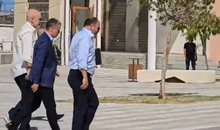
 Flash News
Flash News
Archaeologists shed light on Albanian history with new excavations

Archaeological excavations have included this year many areas in Albania, shedding light with new facts about many ancient cities and archaeological centers.
In the ancient city of Finic, in southern Albania, archaeologists are uncovering the Roman period by expanding the uncovered urban spaces.
The new discoveries prove not only the historical importance, but also help the development of cultural tourism.
"Ancient Phoenicia" resembles an overturned ship on the hill above today's Phoenicia, where archaeologists have returned this year with excavations that aim to shed light on the development of the city in different stages.
Since 2000, there is a long-term agreement between the University of Bologna in Italy and the Albanian Institute of Archeology for excavations and research.
They are held every year in this important archaeological center of Albania, located only about ten kilometers from the coastal city of Saranda.
Finiqi was in ancient times the capital of the Kaon tribe and then the capital of Epirus and is known as the most fortified archaeological center in Albania.
Archeology Belisa Muka, the co-head of the Albanian-Italian mission, says that this year the excavations are also focusing on the public area of the city where a new road has been discovered that connects the buildings, many new urban elements and numerous objects.
This road discovered by this year's excavations connects the upper terrace of the public space with the lower terrace, which testifies to the greatness of Finic in the Roman period. Also, this year we did some research in the area of the Necropolis, the southern cemetery of the city, as Finiqi has several of these, to see the dimensions and carry out the necessary documentation.
Mrs. Muka says that in addition to the excavation, the archaeological material is analyzed and studied at the site.
For the second year in a row, we have set up the archeology laboratory on the site. So the material is collected, washed, dried, selected, documented, everything is done on the site to have a clearer, more direct relationship between the stratigraphy and the material.
Profesori i Universitetit të Bolonjës Guisepe Lepore thotë se gërmimet e këtij viti vijojnë të plotësojnë përpjkjet shumëvjeçare për arritjet shkencore dhe historike, përgatijene studentëve të arekologjisë, konservimin e zonës dhe valorizmin e saj për ta bërë më të prekshme nga turistët.
Së pari nga pikëpamja shkencore kemi zbuluar qytetin romak , Foiniken e periudhës romane. Ne vijojmë të përgatisim këtu studenët shqiptarë dhe italianë të arkeologjisë , të punojmë për mbrotjen dhe ruajtjen e struktuave që dalin në dritë nga gërmimet dhe t`i bëjmë ato më të prekshme nga turistët duke i dhënë zonës vlera të qëndrushme të vizitueshmërisë. Vitin tjetër do të khehemi sërish me misionin e ri, thotë zoti Lepore.
Arkeologia Belisa Muka që drejton edhe Institutin shqiptar të Arkeologjisë thotë se ky vit ka qenë me shumë misione arkeologjike në gjithë sitet.
Zonja Muka thotë se misionet janë zhvilluar nga arkeologët shqiptarë dhe të huaj dhe kanë sjellë të dhëna mjaft të dobishme për disa nga qendrat arkeologjike më të rëndësishme të vendit.
Kërkimet kanë qenë nga veriu në jug, nga lindja në perëndim, në të gjitha sitet dhe parqet arkeologjikë ku e ushtrojmë aktivitetin tonë si Institut, në bashkëpunim apo të vetëm. Rezultatet janë sipas rasteve por gjithnjë të rëndësishëme pasi shtojnë elemente të reja për pyetjet që ne kemi ngritur dhe përgjigjet që duam të marrim. Sigurisht ka pasur projekte që kanë pasur një gjetje më të madhe në raport me të tjerat. Kemi pasur projekte nga prehistoria, antikiteti, antikiteti i vonë dhe mesjeta.
Zonja Muka thote se e ka të vështirë të veçojë projekte specifike, por ajo përmend të dhënat e zbulimit të vendbanimit të lashtë të Linit, në Pogradec, që është datuar si më i vjetri në Europë.
Të gjithë janë po aq të rëndësishëm, por rasti i projektit “Lin 3” veçon për shkak të analizave dhe mundësisë për të përvijuar një fenomen edhe në hapësirat e tjera, pra për të krahasuar oipologjinë e vendbanimit yë palafit në një zonë më të gjerë ,më të shtrirë. Qyeti i Finiqit në periudhën romake është një element i jashtëzakonshëm, Lugina e Drinos ku ka të dhëna të reja, Bushati ka dhënë të reja shumë të rëdësishme, Durrësi qytet me antiekitetin e vonë dhe mesjetën, Butrinit gjithashtu vazhdon , çuka e Ajtoit. Kemi pasur kërkime në Koman, në Drisht, në Sart, në qytetin antik të Zgërdheshit.
Most of the most important archaeological settlements and centers in Albania still need excavation and research as only a small percentage of them have been discovered and turned into tourist itineraries.
After the period of the coronavirus pandemic, when archaeological missions were curbed, now teams of archaeologists are increasingly present to shed more light on the antiquity of Albanian lands./VOA
Latest news

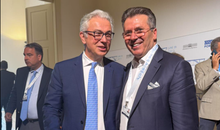

What does Zelenskyy have more than Zegjineja?
2025-07-05 18:45:26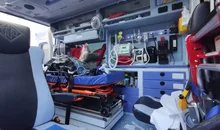

Fiscal peace, but at a cost
2025-07-05 18:00:10
'Bankers' tax evasion, Chinese CEO and former director jailed
2025-07-05 17:39:21
Kyle Walker joins English club on two-year deal
2025-07-05 17:20:24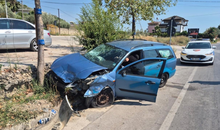
Two cars collide on the Saranda-Delvina axis, 4 injured
2025-07-05 17:05:29
Touching gesture! Liverpool will pay Jota's family's salary until 2027
2025-07-05 16:45:18
The zodiac signs that cheat most often
2025-07-05 16:25:53

"I asked for the dismissals", Dredha tries to soften Rama's 'blow' in Vlora
2025-07-05 15:48:49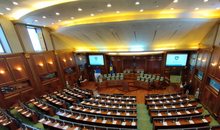
Bomb threat in Parliament, prosecutor: It was a lie
2025-07-05 15:22:28

Bardhi: The recount revealed how greedy Zeqine Balluku is in stealing
2025-07-05 14:44:29
Knife wound on the secondary road Tirana-Durrës, perpetrator sought
2025-07-05 14:37:54
Tears and pain, Diogo Jota is escorted to his final home
2025-07-05 14:21:34
Success starts with yourself! Simple ways to invest in personal development
2025-07-05 13:58:50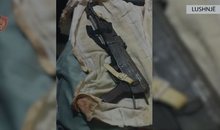
Unlicensed firearms found in apartment, 50-year-old arrested in Lushnje
2025-07-05 13:43:11

Tirana Court remands Skerdi Sina to prison
2025-07-05 12:59:34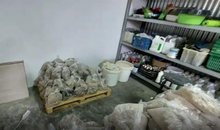
Cocaine laboratory in Greece, here are the Albanians arrested and wanted
2025-07-05 12:40:16
Directed Justice/Vangjeli: SPAK does not investigate any scandal involving Rama
2025-07-05 12:22:03

Bomb alert, Police remove MPs and media from Kosovo Parliament building
2025-07-05 11:48:16
"The will of the people" and the irony of ordered resignations
2025-07-05 11:32:05
Summer drowning risk: How to enjoy the water without risking your life
2025-07-05 11:20:27
Fire situation in the country, 16 fires reported in 24 hours, 4 still active
2025-07-05 11:07:04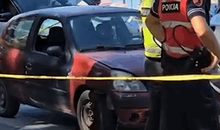
Car hits pedestrian at white lines, injured in serious condition in Vlora
2025-07-05 10:59:58
Mosquito-borne diseases are a growing problem in Europe
2025-07-05 10:44:13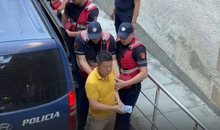



One of Sweden's most dangerous and wanted criminals arrested in Turkey
2025-07-05 09:38:29
Foreign exchange/ How much foreign currencies are bought and sold today
2025-07-05 09:18:38

"Don't be influenced by the opinions of others", today's horoscope
2025-07-05 08:40:50

Morning Post/ In 2 lines: What mattered yesterday in Albania
2025-07-05 08:02:07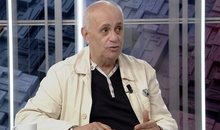

Trump says he's ready to raise tariffs to 70% on some countries
2025-07-04 22:35:52
Tre shenjat e zodiakut që do ‘pasurohen’ në Korrik
2025-07-04 22:05:09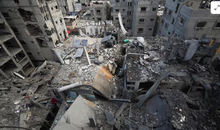
Gaza War: Hamas Accepts US Proposal for 60-Day Ceasefire
2025-07-04 21:50:10
Autocracy in Albania, Fuga: Governance has gotten out of control
2025-07-04 21:40:51
Meta: Agriculture on credit, the new fraud!
2025-07-04 21:26:39
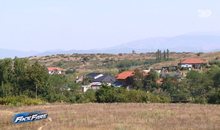



Vote recount in Durrës ends without changes
2025-07-04 20:12:54
Gas station explodes in Rome, 25 injured (VIDEO)
2025-07-04 20:00:20

These afternoon habits often sabotage weight loss
2025-07-04 19:39:28
Former Arsenal player Thomas Partey accused of rape
2025-07-04 19:24:21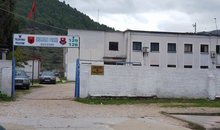
Shepherd disappears without a trace in Delvina
2025-07-04 19:14:31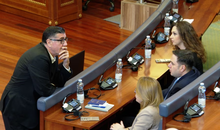

Bardho gave Zegjine's mandate/Braho: Unfair! It violates the electoral system
2025-07-04 19:01:08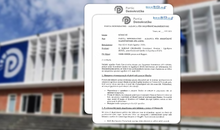
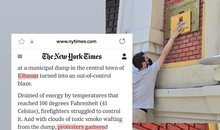

Rapid developments in the Sultanates!
2025-07-04 18:00:06
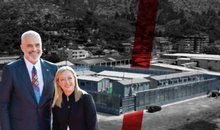


Italy tightens rules for skateboard traffic
2025-07-04 17:20:18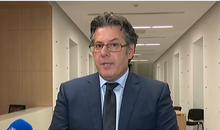
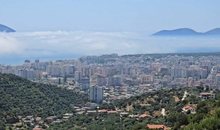
Unusual for the time, dense fog covers the coast of Vlora
2025-07-04 16:48:01

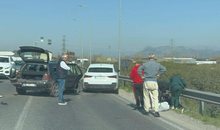
Accident on the Shkodra-Lezhë axis, one dead and 3 injured
2025-07-04 16:14:19
Albania with fewer requests for asylum and Albanian citizenship in 2024
2025-07-04 16:06:57

Albania last for quality of life, DP: Technical government is the solution!
2025-07-04 15:42:30
Nico Williams says "No" to Barcelona, signs with Athletic Club until 2035
2025-07-04 15:33:35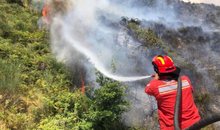
Fires in the country, four fires are still active, what is the situation?
2025-07-04 15:24:20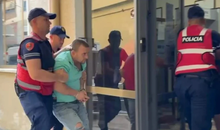

Summer brings big changes for these 4 zodiac signs
2025-07-04 15:00:04
Osmani: MPs need to agree to a secret ballot for the Speaker of Parliament
2025-07-04 14:51:09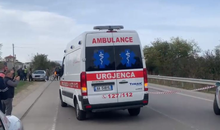
Serious accident on the Peqin-Elbasan axis, two injured
2025-07-04 14:37:56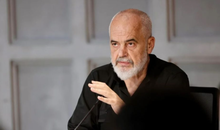
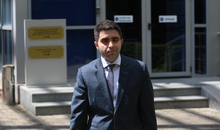
GJKKO leaves in force the security measure for the head of the KPP
2025-07-04 13:58:17
Who will replace Ilir Meta and take over the leadership of the PL?
2025-07-04 13:50:36
Berisha: Dismissal of directors in Vlora, another act of 'scapegoats'
2025-07-04 13:41:46


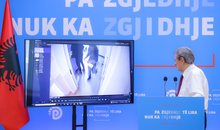

Librazhd/ In a serious psychological state, the young man consumes pesticides
2025-07-04 13:05:07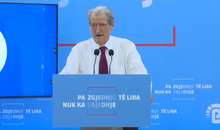

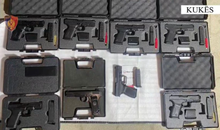
Weapons trafficked from Kosovo to Albania, two arrested, 8 pistols seized
2025-07-04 12:33:28
Konsumimi i tepërt i çokollatës, ja cilat janë dëmet që shkakton në organizëm
2025-07-04 12:23:35
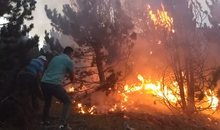
Fires in the country, 21 fires in the last 24 hours, 4 still active
2025-07-04 12:00:19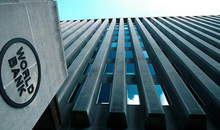
WB calls for debt transparency: Albania to publish details of every loan
2025-07-04 11:50:05
Changes in the State Police, new names expected to lead 5 police stations
2025-07-04 11:40:06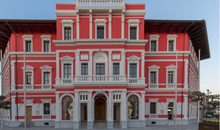
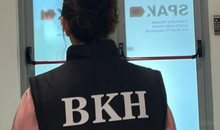
The race for the head of the BKH, the third phase on July 11
2025-07-04 11:20:23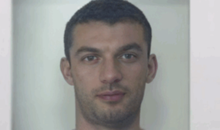

Toxic phrases that show your relationship is in trouble
2025-07-04 11:00:10